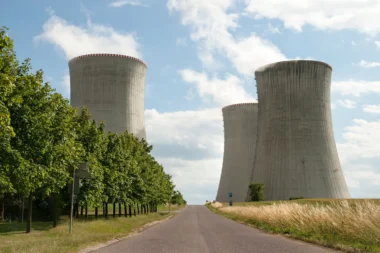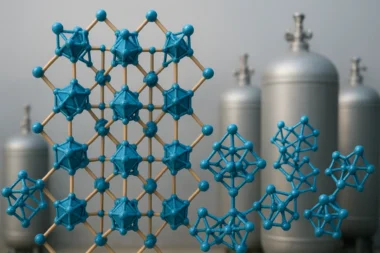Introduction
In an era of increasing energy demand and the need for sustainable solutions, high-energy-density flow batteries have emerged as a promising technology for advanced energy storage. These innovative batteries offer high energy density, improved efficiency, and long cycle life, making them ideal for various applications, from grid-scale energy storage to renewable energy integration.
Understanding High-Energy-Density Flow Batteries
To grasp the essence of high-energy-density flow batteries, it is crucial to comprehend their fundamental principles and critical components. These batteries rely on the flow of electrolyte solutions through electrochemical cells to store and release energy. They consist of electrolyte tanks, pumps, electrodes, membranes, and flow systems that enable the efficient circulation of charged species. The inherent advantages of high-energy-density flow batteries, such as scalability, decoupled power and energy, and long cycle life, have sparked considerable interest in their potential applications.
Types of High-Energy-Density Flow Batteries
High-energy-density flow batteries encompass a range of designs, each with distinct characteristics and applications. Vanadium Redox Flow Batteries (VRFB) are one of the most well-known variants, leveraging vanadium electrolytes to store and deliver energy. Zinc-Bromine Flow Batteries (ZBFB) offer high energy density and low cost, making them suitable for grid-scale energy storage. Iron-Chromium Flow Batteries (ICFB) and Organic Flow Batteries (OFB) have also gained attention due to their unique features and potential applications in specific niches.
Design and Construction of High-Energy-Density Flow Batteries
The design and construction of high-energy-density flow batteries are crucial for their optimal performance. The selection and composition of electrolytes play a pivotal role in determining energy density, stability, and cost-effectiveness. Membrane materials and properties are carefully chosen to enable ion transport while preventing cross-contamination. Electrode design and configuration are tailored to facilitate efficient charge transfer and maximize energy output. Flow system design and cell stacking also ensure seamless electrolyte flow and enhance battery performance.
Flow Battery Operation
Operating high-energy-density flow batteries involves crucial aspects such as charging and discharging processes, power and energy ratings, efficiency considerations, and cycling life. The electrolyte flows through the electrochemical cell during charging, facilitating the electrochemical reactions that store energy. Discharging involves the reverse process, allowing the stored energy to be released as electrical power. Understanding high-energy density flow batteries’ efficiency and performance characteristics is essential for optimizing their utilization and predicting their behavior over time.
Applications of High-Energy-Density Flow Batteries
The versatility of high-energy-density flow batteries enables their application in various sectors. Grid-scale energy storage is a significant application, as these batteries can help stabilize the power grid, manage peak demands, and store excess renewable energy for later use. They also find utility in renewable energy integration, enabling smooth integration of intermittent solar and wind power sources. Microgrids and remote area power systems can benefit from high-energy-density flow batteries’ reliable and scalable energy storage. Furthermore, these batteries have the potential to revolutionize electric vehicle charging infrastructure by offering fast charging capabilities and reducing strain on the electrical grid. They can optimize energy management and reduce costs in industrial and commercial settings.
Manufacturing Process of High-Energy-Density Flow Batteries
The manufacturing process of high-energy-density flow batteries involves several critical steps. Electrolyte preparation and conditioning are essential to ensuring the desired composition and properties for optimal battery performance. Electrode fabrication and assembly require precision techniques to create electrodes with a high surface area and excellent electrochemical performance. Membrane integration and sealing processes ensure the integrity of the battery’s internal structure. Finally, flow system installation and rigorous testing guarantee the efficient and reliable flow of electrolytes throughout the battery system.
Advancements and Future Outlook
Due to ongoing research and development efforts, high-energy-density flow batteries constantly evolve. Materials, electrolytes, and cell design innovations aim to enhance energy density, cycle life, and overall battery performance. Emerging technologies, such as redox-active organic molecules, promise to improve the capabilities of high-energy-density flow batteries further. However, challenges remain, including cost reduction, scalability, and environmental considerations. Continued advancements and collaborations across academia, industry, and government sectors are essential to realizing the full potential of these advanced energy storage solutions.
Conclusion
High-energy-density flow batteries represent a significant leap forward in energy storage technology. Their ability to deliver high energy density, a long cycle life, and efficient energy management positions them as an essential component of the future energy landscape. From grid-scale energy storage to renewable energy integration and beyond, high-energy-density flow batteries offer immense possibilities for a more sustainable and resilient energy future. As research and development efforts continue, these innovative batteries will undoubtedly play a vital role in shaping our energy systems for years to come.
By providing a comprehensive overview of high-energy density flow batteries, their design and construction, operation, applications, and manufacturing process. It highlights the potential of high-energy-density flow batteries as a sustainable solution to meet the growing energy demands of our society, paving the way for a greener and more efficient future.



